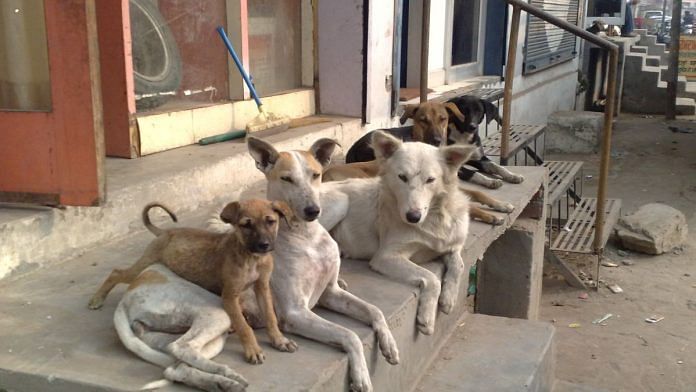The Bruhat Bengaluru Mahanagara Palike’s latest initiative to feed stray dogs with daily meals of chicken and rice is heartening and long overdue. But it raises questions of sustainability and effectiveness. Does the measure tackle the root of the problem?
With a Rs 2.8 crore allocation for this pilot scheme, the plan is to feed up to 5,000 stray dogs every day across its eight municipal zones. The BBMP is positioning it as a major step forward for animal welfare under its ‘One Health’ initiative.
On X, the backlash was swift. Many called it yet another taxpayer-funded stunt, masking corruption in the name of compassion. Some criticised the priorities, saying authorities are sidelining more important issues. Others called the BBMP a “money-making machine”, pointing to broken footpaths, vanishing pothole complaints, and destitute parks.
Feeding strays reduces aggression in dogs, but chicken and rice are no silver bullet. If not paired with robust sterilisation and vaccination efforts, the scheme would be no more than a band-aid.
Feeder-resident tension
Hunger does increase the chances of stray dogs biting people. We’ve seen painful reminders of this, most recently in Karnataka’s Bhatkal town, where more than 15 people—most of them children and senior citizens—were attacked by stray dogs in just 70 hours. From bite cases to fatal maulings, such incidents have become far too common across urban India, stoking public fear and anger.
Take Pune, for instance. Despite years of sterilisation drives, the city reported over 16,000 dog bite cases in May 2025. Feeding must go hand-in-hand with aggressive, continuous ABC (animal birth control) and anti-rabies programmes.
The BBMP’s plan to identify feeding zones and collaborate with community members is wise. But unless these feeding points are well-managed, hygienic, and clearly communicated to residents, they risk becoming flashpoints of conflict.
Bengaluru is no stranger to tensions between feeders and local residents. Feeder harassment, threats, and even poisoning incidents highlight the dark side of public resistance. Last month, a stray dog feeder from K R Puram found five dogs bleeding from the mouth.
The plan to involve ward committee members is a good sign. Consistent engagement with citizens is a must—the programme won’t survive on goodwill alone.
Also read: Indian laws are letting animals down every day. It’s a legal, moral, ethical issue
Question of feasibility
The question of feasibility looms large. The BBMP’s ambitious app to track ABC and vaccination efforts is yet to see the light of day.
In 2019, the BBMP announced ‘Shwana’, a mobile app designed to boost accountability and transparency for its ABC and anti-rabies vaccination programmes. The app promised enhanced tracking features and real-time access to detailed data, including photos of every procedure.
The app was slated for launch in 2024—five years after it was first announced. But the BBMP is yet to move past app trials.
Rs 2.8 crore a year may seem generous now, but what happens when the vendors drop out or the feeding quality drops?
Groups like Cubbon Park Canines and the CJ Memorial Trust track dog populations, feed them, and engage with communities—often more effectively than official mechanisms. Cubbon Park Canines feed around 120 dogs daily, while the CJ Memorial Trust operates over 65 canine squads across Bengaluru, staying in touch with locals to monitor community dogs. But even these groups struggle with data accuracy and managing public sentiment.
The scheme’s potential shouldn’t be dismissed. It acknowledges that stray dogs are a public health and community issue—not just an animal welfare one. Feeding spots could transform into well-organised community hubs. The programme opens the door for residents and feeders to work together rather than at odds.
Feeding stray dogs chicken and rice might win hearts today—but what about next year, and the one after that? If the BBMP wants a lasting solution, it must back sentiment with systems that last.
(Edited by Prasanna Bachchhav)






